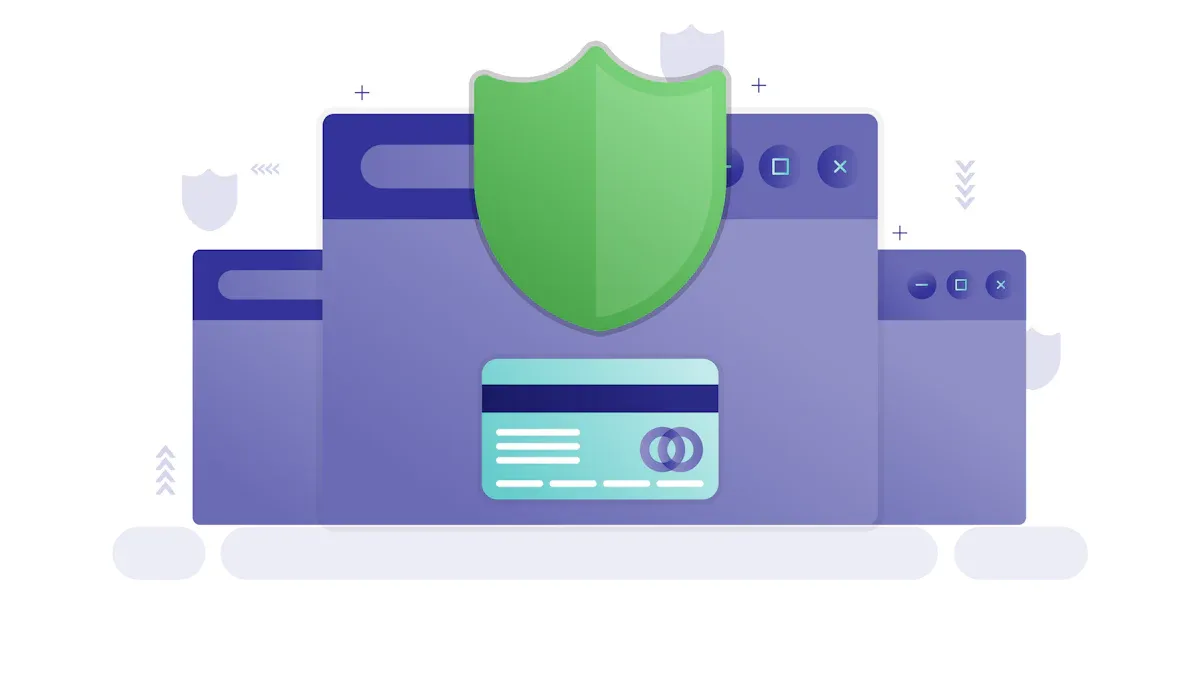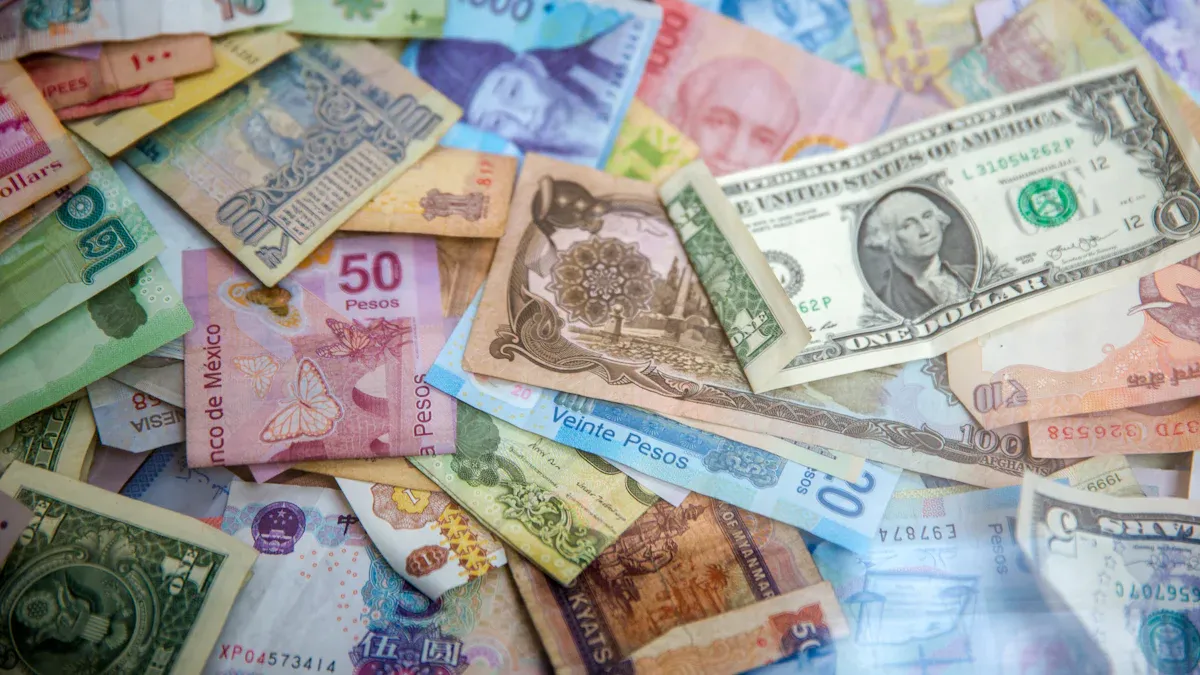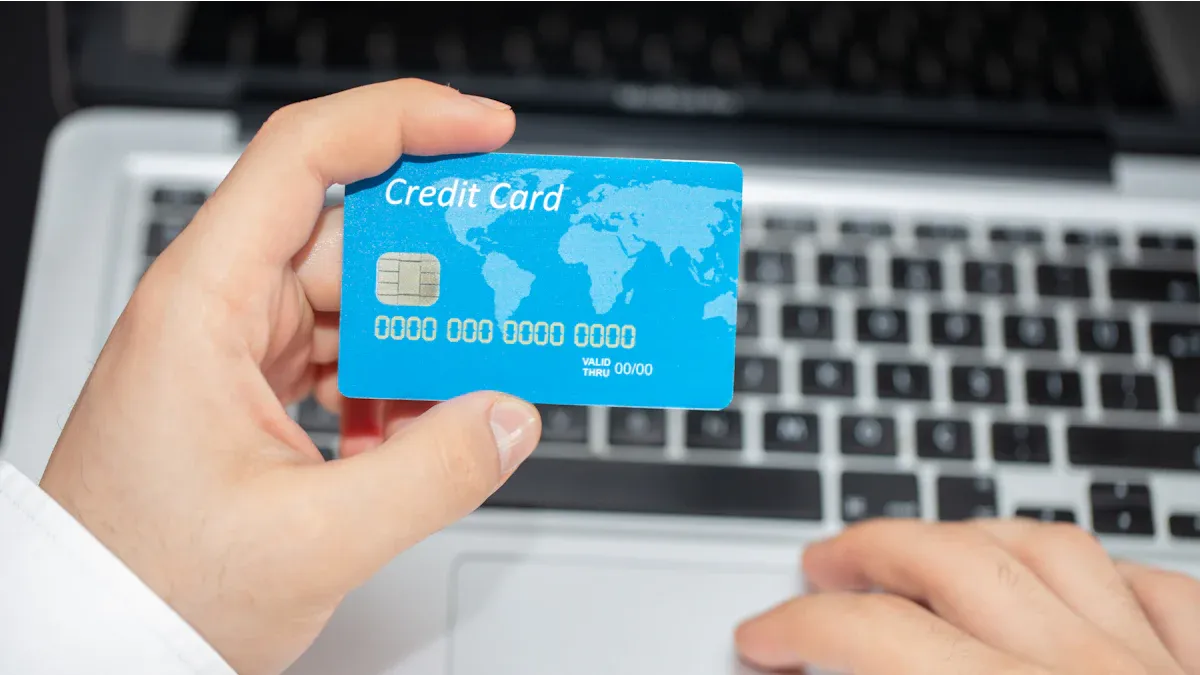- EasyCard
- Trade
- Help
- Announcement
- Academy
- SWIFT Code
- Iban Number
- Referral
- Customer Service
- Blog
- Creator
Jamaican Currency Exchange Rate: How to Get the Best Exchange Rate and Send Money Safely?

Image Source: unsplash
When sending money to Jamaica via remittance, you may face two major challenges: finding a cost-effective Jamaica currency exchange rate and ensuring fund safety. Have you ever been frustrated by complex remittance processes and hidden fees?
Remittances are vital to Jamaica’s economy. Data shows the country received up to $3,370.10 million in remittances in 2023. These funds play a significant role in its economy, as clearly shown in the chart and table below.
| Year | Remittances as % of GDP |
|---|---|
| 2020 | 22.20370% |
| 2019 | 16.18710% |
| 2018 | 15.90270% |
| 2017 | 16.62960% |
| 2016 | 17.28640% |
This guide provides clear, actionable steps to help you confidently complete every remittance.
Key Points
- You need to check the real-time mid-market exchange rate, which includes no hidden fees.
- You should compare the total cost of different remittance channels, including handling fees and exchange rate margins.
- You can use rate alerts and rate lock tools to seize favorable exchange rate timing.
- You should choose government-regulated online remittance platforms to ensure fund safety.
- You need to carefully verify recipient information to avoid remittance errors and scams.
Understanding Jamaica Currency Exchange Rates and Acquisition Tips

Image Source: unsplash
To secure the most cost-effective remittance deal, you first need to understand how Jamaica currency exchange rates work. This is not just about finding a number but learning how to compare and time your transactions. Here are three key tips to save more money when remitting.
Checking Real-Time Market Rates
The first step in remitting is understanding the current “official” exchange rate. You need to check the Mid-Market Rate. This is the true rate used by banks and large institutions for currency trades, free of any hidden markups or fees.
You can use free online tools like Google Finance, XE, or OANDA to check this benchmark rate. Use the rate you find as a standard to evaluate whether the rates offered by remittance platforms are fair.
What is the Mid-Market Rate? Simply put, it’s the midpoint between the buy and sell prices. When you see exchange rates in news reports, they usually refer to this rate. Any quote below this rate means the provider has added a profit margin to the exchange rate.
For example, the current mid-market rate might be:
- 1 USD approximately equals 160 JMD
- 1 GBP approximately equals 200 JMD
- 1 CAD approximately equals 114 JMD
Remember, these rates fluctuate in real-time, so check the latest data before transacting.
Comparing Total Costs Across Channels
Many remittance services advertise “zero fees” or attractive rates, but that’s often only part of the story. To calculate the true cost, you must focus on the total cost, which consists of two parts:
- Fixed Handling Fee: The explicit fee you pay for each transaction.
- Exchange Rate Margin: The difference between the provider’s offered rate and the mid-market rate. This is a hidden cost and often the main profit source for remittance services.
To make an informed choice, calculate the exact amount the recipient will receive. Don’t be swayed by low handling fees alone; a poor exchange rate can cost you more.
According to World Bank data, digital remittances are generally more cost-effective than traditional cash remittances. The cost difference is particularly evident in Latin America and the Caribbean.
| Remittance Type | Average Cost |
|---|---|
| Cash Remittance | Up to 6.2% |
| Digital Remittance | 5.09% |
Data shows choosing digital channels can save nearly 18% in costs. Thus, when comparing banks, online platforms (e.g., Wise, Remitly), and local exchange points, always calculate the total JMD received.
Timing Exchange Rate Fluctuations
Jamaica’s currency exchange rate fluctuates due to multiple factors, including:
- Trade balance
- Inflation rates
- Interest rate changes
- Foreign direct investment
- Government monetary policy
Jamaica’s central bank, the Bank of Jamaica, stabilizes rates through interest rate adjustments and forex interventions. Nonetheless, short-term fluctuations persist. For example, over the past week, the USD to JMD rate fluctuated between 159.696 and 160.643. While seemingly minor, these differences become significant for large remittances.
You can leverage these fluctuations for better deals. Some platforms offer useful tools:
- Rate Alerts: Set a target rate, and the platform notifies you via email or app when the market rate hits your goal. For example, Ria Money Transfer offers promotion and discount alerts, which can serve as a rate alert mechanism.
- Rate Lock: Some services let you lock in the current rate when initiating a transaction, typically valid for 24 to 48 hours, protecting you from unfavorable rate changes during processing.
By monitoring factors affecting Jamaica’s currency rate and using these tools, you can remit at the optimal time, maximizing your funds’ value.
Choosing Secure and Reliable Remittance Channels

Image Source: pexels
After learning how to secure the best rate, the next step is choosing a secure and efficient remittance channel. Different channels vary in fees, speed, and convenience. Selecting the best option for you and the recipient is crucial.
Popular Online Remittance Platforms
In recent years, online remittance platforms have gained popularity for their transparent fees, competitive rates, and ease of use. They are often cheaper and faster than traditional banks.
Here are some popular platforms for sending money to Jamaica:
- Wise (formerly TransferWise): Known for offering rates close to the mid-market rate. Its fee structure is highly transparent, showing all costs and final received amounts upfront.
- Remitly: Offers flexible remittance options. Choose lower-cost economy transfers (3-5 business days) or faster express transfers (within minutes). Ideal for recipients needing cash, Remitly is reliable.
- It provides extensive cash pickup services in Jamaica.
- The platform uses multi-layered security to ensure safe transactions.
- It offers an on-time delivery guarantee, giving confidence in timely arrivals.
- Xoom (a PayPal service): Known for fast transfer speeds, funds can reach the recipient’s bank account or designated cash pickup points in minutes. However, convenience may come with rate costs.
Safety Tip: How to Identify Secure Platforms? Reliable platforms prioritize your fund safety. They typically use two-factor authentication (2FA) to secure your account. When logging in or transacting, you’ll need a second verification step via SMS, an authenticator app (e.g., Google Authenticator), or fingerprint/face recognition. Additionally, these platforms set transaction limits and fraud monitoring systems for comprehensive protection.
For a clear view of rate differences, consider this example. Assuming the mid-market rate is 1 USD = 160.134 JMD and you send 1,000 USD:
| Provider | Offered Rate (1 USD) | Final Amount Received (Sending 1,000 USD) |
|---|---|---|
| Mid-Market Rate (Benchmark) | 160.134 JMD | 160,134 JMD |
| Xoom | 154.208 JMD | 154,207.90 JMD |
This table shows the gap between the provider’s rate and the market rate, a hidden cost you pay.
Traditional Bank Wire Transfers
Sending money via your bank is a traditional and secure method, but it comes with higher costs and longer wait times.
- Higher Fees: International wires are typically more expensive than online services. Funds may pass through one or more intermediary banks before reaching Jamaica, each charging a processing fee, reducing the recipient’s amount.
- Longer Times: Bank wires aren’t instant. While banks usually process requests on the same day if before the cutoff, funds take an average of 1 to 5 business days to arrive. Anti-fraud checks or holidays can further delay processing.
If choosing a bank wire, note the bank’s daily cutoff times.
| Bank (US) | International Wire Cutoff Time (Eastern Time) |
|---|---|
| Bank of America | 5:00 PM |
| JPMorgan Chase | 4:00 PM |
| Citibank | 5:15 PM |
| Wells Fargo | 5:00 PM |
In summary, bank wires suit users prioritizing traditional banking channels and willing to accept higher fees and slower speeds.
Local Receiving Options in Jamaica
When choosing a remittance channel, consider the recipient’s convenience in Jamaica. A good exchange rate is important, but if the recipient struggles to access funds, the experience isn’t ideal.
There are two main receiving methods:
- Bank Account Deposit If the recipient has a Jamaican bank account, depositing funds directly is the most convenient and secure option. Major Jamaican banks like Scotiabank and National Commercial Bank (NCB) fully support international remittances. Many online platforms integrate seamlessly with these banks.
- Cash Pickup For recipients without bank accounts or needing cash urgently, cash pickup is ideal. After remitting, you receive a transaction reference number, and the recipient can collect cash at designated locations with valid ID.
- Jamaica has an extensive cash pickup network, notably GraceKennedy (Western Union’s local partner).
- These pickup points are widespread across Jamaica, including supermarkets, pharmacies, and dedicated remittance stores, making access convenient.
Before deciding, discuss with your recipient to determine the simplest and fastest method for them.
Avoiding Remittance Traps and Reducing Costs
A successful remittance requires not just a good rate but also safety. Simple steps can help you avoid common traps and lower costs.
Identifying All Hidden Fees
Advertised remittance prices may not reflect the final cost. Some services profit through hidden fees. Act like a detective to uncover all potential costs for an accurate transaction cost.
The table below lists common hidden fees:
| Fee Type | Description |
|---|---|
| Sending Fee | The fee you pay to initiate the transfer. |
| Receiving Fee | Some banks charge recipients for receiving funds. |
| Intermediary Bank Fees | Banks along the transfer path may deduct processing fees. |
| Exchange Rate Markup | Providers offer rates below the market rate, with the difference as their profit. |
| SWIFT Fees | Some banks charge for using the SWIFT network. |
Before confirming, ask about all possible fees.
Verifying Regulatory Credentials
Your fund safety is paramount. Choosing a government-regulated remittance company is the first line of defense. These institutions ensure proper handling of your funds.
Check the company’s website footer for compliance license information. For example, Remitly and Wise display their licenses for various countries.
Key financial regulators in major countries include:
| Country/Region | Regulatory Body |
|---|---|
| United States | Financial Crimes Enforcement Network (FinCEN) |
| United Kingdom | Financial Conduct Authority (FCA) |
| Canada | Financial Transactions and Reports Analysis Centre of Canada (FINTRAC) |
Choosing a regulated platform ensures a safer remittance process.
Verifying Key Remittance Information
A single input error can cause delays, failures, or fund losses. Double-check every detail before clicking “send.”
⚠️ Safety Warning: Beware of Lottery Scams The most common scam in Jamaica is the “lottery scam”. Scammers contact you via phone or email, claiming you’ve won a prize but must pay a tax or fee to claim it. Never send money to strangers for unverified lotteries.
Pay special attention to avoiding these common errors:
- Recipient Name Spelling Errors: Ensure the name matches the recipient’s ID exactly.
- Incorrect Account Number: One wrong digit can send funds to the wrong account.
- Missing Bank Codes: International transfers often require SWIFT codes.
Carefully verifying these details ensures your funds reach the recipient accurately and quickly.
You now have the know-how to optimize Jamaica currency exchange rates and remit safely. Remember these four key steps:
- Check Benchmark: Use tools to find the mid-market rate.
- Compare Costs: Calculate total costs, including all fees.
- Choose Channel: Prioritize regulated platforms.
- Verify Details: Double-check recipient information.
Each person’s needs differ. Choose the platform best suited to your priorities based on speed, cost, and user reviews.
Using these methods flexibly, you can remit with confidence and economy.
FAQ
What’s the fastest way to send money to Jamaica?
Online remittance platforms are typically the fastest. For example, Remitly’s express service or Xoom can deliver funds in minutes. Bank wires may take 1 to 5 business days. Faster speeds may mean higher rate costs.
How do I ensure my remittance is secure?
Choose a government-regulated remittance company.
- Check the company’s website for its license information in your country/region.
- Use platforms with two-factor authentication (2FA).
- Never send money to strangers, and beware of scams requiring upfront payments for prizes.
What information is needed for a bank account transfer to Jamaica?
You typically need:
- Recipient’s full name (matching their ID)
- Recipient’s bank name
- Recipient’s bank account number
- Bank’s SWIFT/BIC code
Verify all details carefully before confirming to avoid delays.
Why does the recipient receive less than expected?
This is usually due to hidden fees. Total costs include not just fixed handling fees but also the “exchange rate margin” added by providers. Intermediary or receiving banks may also charge fees. Compare final received amounts to account for these.
*This article is provided for general information purposes and does not constitute legal, tax or other professional advice from BiyaPay or its subsidiaries and its affiliates, and it is not intended as a substitute for obtaining advice from a financial advisor or any other professional.
We make no representations, warranties or warranties, express or implied, as to the accuracy, completeness or timeliness of the contents of this publication.




Contact Us
Company and Team
BiyaPay Products
Customer Services
is a broker-dealer registered with the U.S. Securities and Exchange Commission (SEC) (No.: 802-127417), member of the Financial Industry Regulatory Authority (FINRA) (CRD: 325027), member of the Securities Investor Protection Corporation (SIPC), and regulated by FINRA and SEC.
registered with the US Financial Crimes Enforcement Network (FinCEN), as a Money Services Business (MSB), registration number: 31000218637349, and regulated by FinCEN.
registered as Financial Service Provider (FSP number: FSP1007221) in New Zealand, and is a member of the Financial Dispute Resolution Scheme, a New Zealand independent dispute resolution service provider.



















